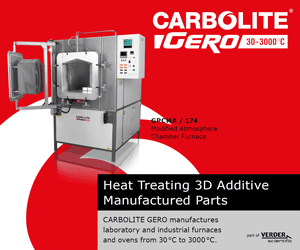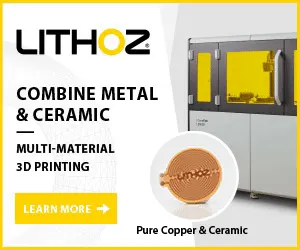What are the main metal Additive Manufacturing processes?
The metal Additive Manufacturing landscape can be complex, with many different technologies, materials and processes that often get confused with trade names and company-registered trademarks. While these names are important for protecting commercial interests, they do not assist in promoting a wider understanding of Additive Manufacturing and the differentiation between the various available metal AM processes.
As such, Additive Manufacturing standards offer the best guide for demystifying and categorising AM technologies, and the remainder of this section is based heavily on those standards, in this case set by the International Organization for Standardization (ISO).
For more information, refer to ISO/ASTM 52900:2021 ‘Additive Manufacturing – General principles – Fundamentals and vocabulary.’
Categorising metal Additive Manufacturing processes
There are seven different types of AM technologies identified in the ISO/ASTM standard. These are:
- Powder Bed Fusion (PBF) – where a thermal source is used to selectively consolidate powdered materials
- Binder Jetting (BJT) – where liquid binder is selectively deposited to bind powdered materials
- Directed Energy Deposition (DED) – where feedstock material, either powder or wire, is melted via a focused thermal source as it is deposited
- Material Extrusion (MEX) – where material is extruded through a nozzle or orifice
- Vat Photopolymerisation (VPP) – where liquid photopolymer is selectively cured in a chosen geometric pattern
- Material Jetting (MJT) – where droplets of build material are selectively deposited on a build plate
- Sheet lamination (SHL) – where sheets of material are layered and bonded to form an object
It should be acknowledged that not every metal Additive Manufacturing process fits neatly within the categories laid out in ISO standards. For example, solid-state technologies such as those developed by MELD Manufacturing are, as yet, in their own unique category.
What is Powder Bed Fusion Additive Manufacturing?
As far as metal AM is concerned, Powder Bed Fusion is by far the most adopted technology; specifically, Laser Beam Powder Bed Fusion (PBF-LB). It is sometimes referred to by the trademarked name of DMLS® (Direct Metal Laser Sintering), a misnomer given the process no longer involves sintering, but melting. It is also known as SLM® (Selective Laser Melting), or LaserCUSING®; however, it is important to recognise that the correct name is PBF-LB, a term recognised by International Standards and now coming into more common usage in the commercial space.
Laser Beam Powder Bed Fusion
The PBF-LB process usually requires a metal powder feedstock in the 15–45 µm range, which is spread in a thin layer via a flexible or hard recoater, or a roller. A laser is then projected, via a galvanometer, towards the powder bed, where it melts the metal powder as per g-code instructions derived from 3D model data.
Scan strategies can differ between machine providers, but generally, there is a raster parameter set, and an outline or ‘skin’ parameter set. The process occurs in an inert atmosphere which is either argon or nitrogen filled. Typical metals processed via PBF-LB are stainless steel, aluminium, titanium, nickel-base alloys, and cobalt chrome alloys.
The need for an inert atmosphere means that there is a need for a closed build chamber, and this in turn dictates the build volume available for Additive Manufacturing. Typical build volumes are 300 mm3, or sometimes slightly less. However, there is an increasing trend towards larger build volumes and the use of multiple lasers, with some machines containing up to eight or even twelve lasers.
Current innovations are focused on laser beam modification, such as laser modulation, splitting the laser beam, or shaping the beam. All of these approaches are intended to reduce build times or enhance the quality of the build.
There are numerous providers of PBF-LB machines, including some of the more established brands such as 3D Systems, EOS, SLM Solutions, Renishaw, and the now GE-owned Concept Laser. However, many other providers have entered the market in the last five years, including those with quite innovative approaches, such as Seurat Technologies, Velo3D, and Aconity3D.
Electron Beam Powder Bed Fusion
In Electron Beam PBF (PBF-EB), an electron beam is used as the thermal source rather than a laser. The PBF-EB process operates within a vacuum environment and operates at high build chamber temperatures. Due to the higher energy density of an electron beam, a larger powder size distribution can be used in PBF-EB, i.e. 50–120 µm. As a result of the larger powder size and therefore increased layer height, the PBF-EB process is typically quicker than the PBF-LB process.
Alloys processed are similar to those used in PBF-LB, with the exception that aluminium and other low boiling point metals tend to be vapourised when exposed to an electron beam, so are rarely processed via PBF-EB. Previously the PBF-EB market was dominated by Arcam, but in more recent years the intellectual property space has opened up and new entrants such as JEOL, Wayland Additive and Freemelt have come forward with PBF-EB systems.
What is metal Binder Jetting?
Binder Jetting (BJT) is a metal Additive Manufacturing technology in which a liquid bonding agent is selectively deposited onto a powder bed, bonding the powder material one layer at a time. The process has existed for some time and can be used to produce components from several different materials, including metals, ceramics, composites and sand.
Binder Jetting can utilise metal powder from conventional supply chains and, depending on the application, the process can result in cost-effective production technology for metal parts.
In the jetting or build phase, fine droplets of a bonding agent are selectively deposited onto the powder bed. A recoater then spreads a new layer of powder over the build platform and the print head deposits another layer of bonding agent. This process continues, layer by layer, until the part geometry is achieved. At this stage, the excess, unbonded metal powder is removed (for re-use) and the ‘green’ part is ready for the next step of the process.
After the build process, the green part is very weak, with the powder particles held together only by the bonding agent. To obtain a final part, either an infiltration process or a sintering stage is required. Using the sintering method, the binder is removed from the green part through either a chemical or thermal process before a final sintering stage.
In the infiltration method, the green parts are heated in a furnace to remove the binder, bronze is then used to infiltrate the voids between the powder particles via a capillary action. Applications that demand like-for-like alloys in their manufacturing processes tend to opt for the sintered route, rather than the infiltration method.
The sintering process is well established, and the material properties of parts made by Binder Jetting are close to those of conventional sintered parts, such as those produced by Metal Injection Moulding (MIM). Sintering is undertaken at a temperature just below the metal’s melting point, at which point the powder particles bond and form a near fully dense part.
However, as with MIM, Binder Jetting requires an understanding and allowance for the shrinkage and distortion that occurs during the debinding and sintering stages. The actual amount of shrinkage depends on several factors, but simulation software is available to help with these calculations.
Material options can be limited, as the Binder Jetting environment is not inert; however, more recent developments have focused on processing reactive metals. Currently, steels are the most popular option for Binder Jetting, but copper, titanium and nickel alloys are also available, with the list growing.
Desktop Metal acquired ExOne in 2021, and today is a leading provider of metal Binder Jetting machines. Material Extrusion machine manufacturer Markforged also offers Binder Jetting technology, following its acquisition of Digital Metal from Sweden’s Höganäs AB in August 2022. HP and GE have since launched their own metal Binder Jetting machines.
Other companies have introduced Additive Manufacturing processes similar to BJT, but there is debate as to whether these can be classed under Binder Jetting. For example, 3DEO, a California-based company that sells parts based on its patented technology rather than machines, maintains that it sprays a binder onto a layer of metal powder, rather than jetting it.
The process is a hybrid of additive and subtractive, as micro end mills cut the perimeter and cavities of the parts. Under 3DEO’s business model of keeping the technology in-house, it has not proliferated to end-users; however, as a contract manufacturer, the company has delivered over one million parts to customers.
What is Directed Energy Deposition?
Directed Energy Deposition (DED) is a broad category of Additive Manufacturing process type and can include blown powder consolidated with a laser, or wire melted and deposited via a laser, electron beam, or electric arc. Many DED processes have a technical basis in cladding and repair technologies, and are quite well understood, yet have not enjoyed the level of commercial success that PBF-LB has had in the AM industry to date.
The processes are ‘line-of-sight’ processes, which, unlike PBF processes, means that tool-pathing can be restricted and, as a result, the achievable geometries are less complex. In addition, the produced part is typically near-net shape and thus usually some post-machining is required. In recognition of the need for post-machining, some DED systems come as a ‘hybrid’ additive-subtractive solution.
Wire-based DED technology is available from a range of companies, such as AML3D, Gefertec, Mazak, Meltio, MX3D, SBI and WAAM3D. US-based Sciaky, Inc. offers a wire-based DED technology that it refers to as Electron Beam Additive Manufacturing (EBAM). The company’s EBAMÒ metal AM machines are capable of using high-value materials such as titanium, tantalum, and nickel-base alloys, to produce parts and structures up to 6 m in length.
What is Material Extrusion (MEX)?
Only a small number of systems offer Material Extrusion (MEX) for metals, as this is typically a polymer AM technology. MEX for metal involves a metal-containing material being extruded to produce a green part which is then put through a debinding and sintering step.
Several emerging technologies in metal AM could fall broadly under the category of material extrusion. For example, Desktop Metal’s Studio System is based on Bound Metal Deposition™, where metal-containing material is extruded to form a green part, which is then sintered to a fully dense part. A similar approach is taken by Markforged with its Metal X.
Likewise, Mantle, a California-based start-up, offers a technology that extrudes a metal paste through a nozzle onto a build plate and then combines this with milling of the green part and sintering in a furnace.
Metal-containing filaments, offered by BASF and The Virtual Foundry, for example, can be used to produce green parts on a simple MEX-based Fused Filament Fabrication (FFF) desktop ‘3D printer.’ These parts must then be put through a debinding and sintering step to achieve the final part.
What other metal Additive Manufacturing processes are there?
Material Jetting
Material Jetting, while traditionally the domain of polymer AM, is now offered by some companies for metals. For example, XJet and Nano Dimension with their Dragonfly system, both have a technology that involves jetting fine droplets of metal onto a build plate, and could therefore be considered material jetting.
Lithography-based AM / Vat Photopolymerisation
MetShape and Incus both have systems based on what they term ‘Lithography-based Metal Manufacturing’ (LMM) where a metal powder is dispersed in a light-sensitive resin and selectively cured via exposure to UV light. Another term for this is Vat Photopolymerisation (VPP). The green part is then debound and sintered in a furnace to produce a near fully-dense part. The process has its roots in ceramic AM.
> Next page: What are the main types of metal Additive Manufacturing material?
Download Metal AM magazine















